The Great Nicobar Misadventure
First published in Sanctuary Asia,
Vol. 43
No. 4,
April 2023
By Pankaj Sekhsaria
“Trees with nesting holes of endemic owls to be identified and geo-tagged with help from SACON. Such trees shall be safeguarded, as far as possible.”
On November 11, 2022, the Ministry of Environment, Forest and Climate Change (MoEFCC) granted its final environmental clearance (EC) to a mega infrastructure project euphemistically titled ‘Holistic Development of Great Nicobar Island’. It marked the culmination of a roughly two year-long process for the project, which will be implemented over the next three decades in the ecologically rich and geologically volatile Great Nicobar Island, the southern-most in the Andaman and Nicobar chain.
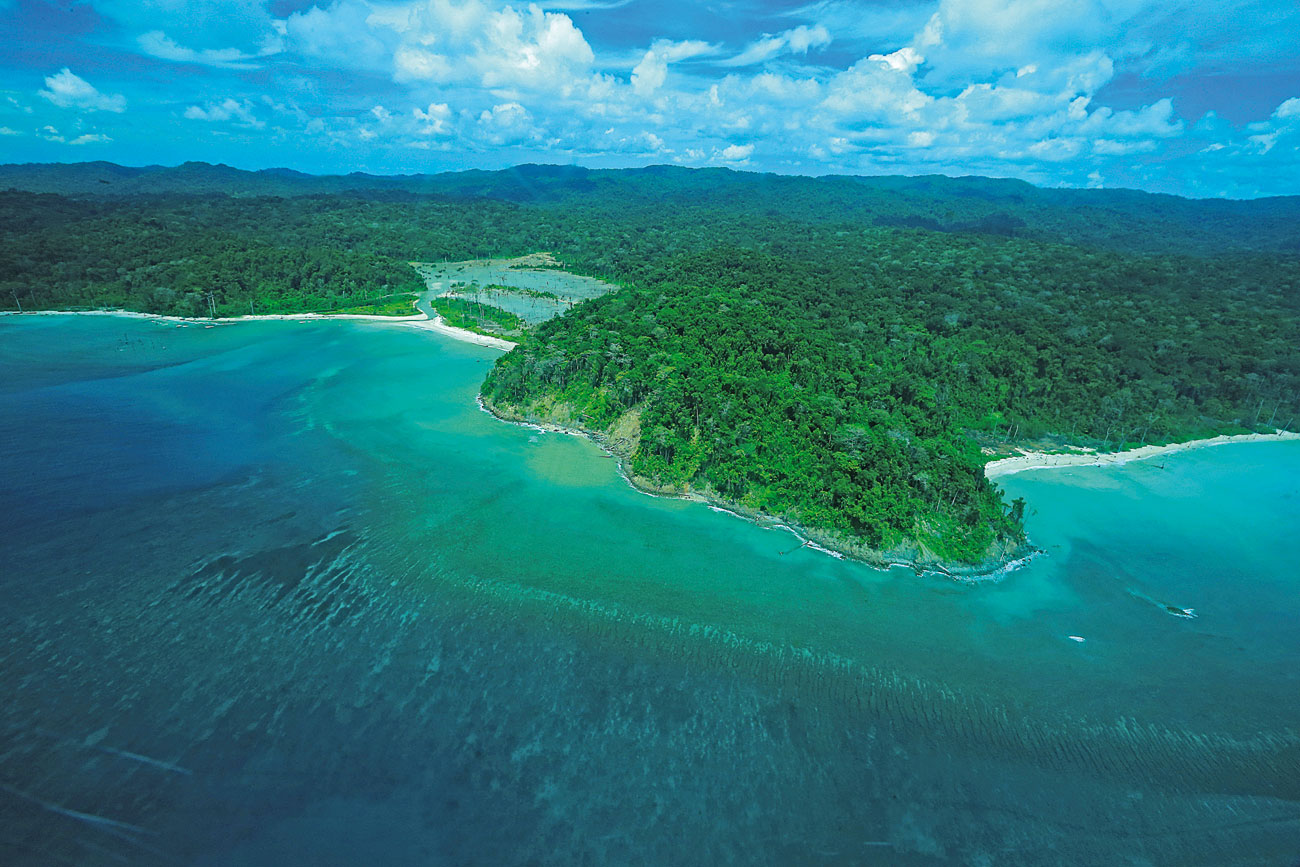
This aerial view of Galathea Bay shows unbroken monsoon rainforests, stretching out as far as the eye can see. These forests are an immense, invaluable repository of endemic biodiversity, none of which can be revived once lost. The coastline that hugs this bay is India and Southeast Asia’s biggest known leatherback turtle Dermochelys coriacea nesting site. Photo: Sandeep Dhumal.
The quote above is one of the many conditions laid out in the clearance letter for this Rs. 72,000 crore project that has been piloted by the NITI Aayog and will be implemented by the Port Blair-based Andaman and Nicobar Islands Integrated Development Corporation (ANIIDCO). The plan’s centre-piece is a Rs. 41,000 crore transhipment port to be constructed at Galathea Bay, a prime nesting site of the giant leatherback turtle. Other components include an airport, a powerplant and a greenfield township spread over 160 sq. km. of land, including 130 sq. km. of primary forest.
Covering roughly 18 per cent of the 910 sq. km. island, this is a mega project unlike any seen in India. Great Nicobar is important for multiple reasons – it is a rich repository of biodiversity and endemism, was declared a biosphere reserve by UNESCO in 2013, has two large national parks, is protected as a tribal reserve for the Indigenous Shompen and Nicobarese communities, and is also located in the world’s most seismically volatile zone. It saw a permanent subsidence of under five metres in the immediate aftermath of the earthquake of December 26, 2004, which triggered the massive south and south-east tsunami. Thousands were killed and assets worth billions of dollars were destroyed in one stroke. The scale of the subsidence in Great Nicobar is evident from the fact that the light house at Indira Point, which was earlier situated well above the high tide line now stands completely surrounded by the waters of the Andaman Sea.
Logic suggests that the wise men in MoEFCC and its expert bodies would be particularly careful and diligent when considering clearance for such a massive project, given its exceptionally sensitive and vulnerable location. The condition quoted in the very beginning appears then to be an illustration of precisely such concern. A more careful look, reveals a vastly different picture.
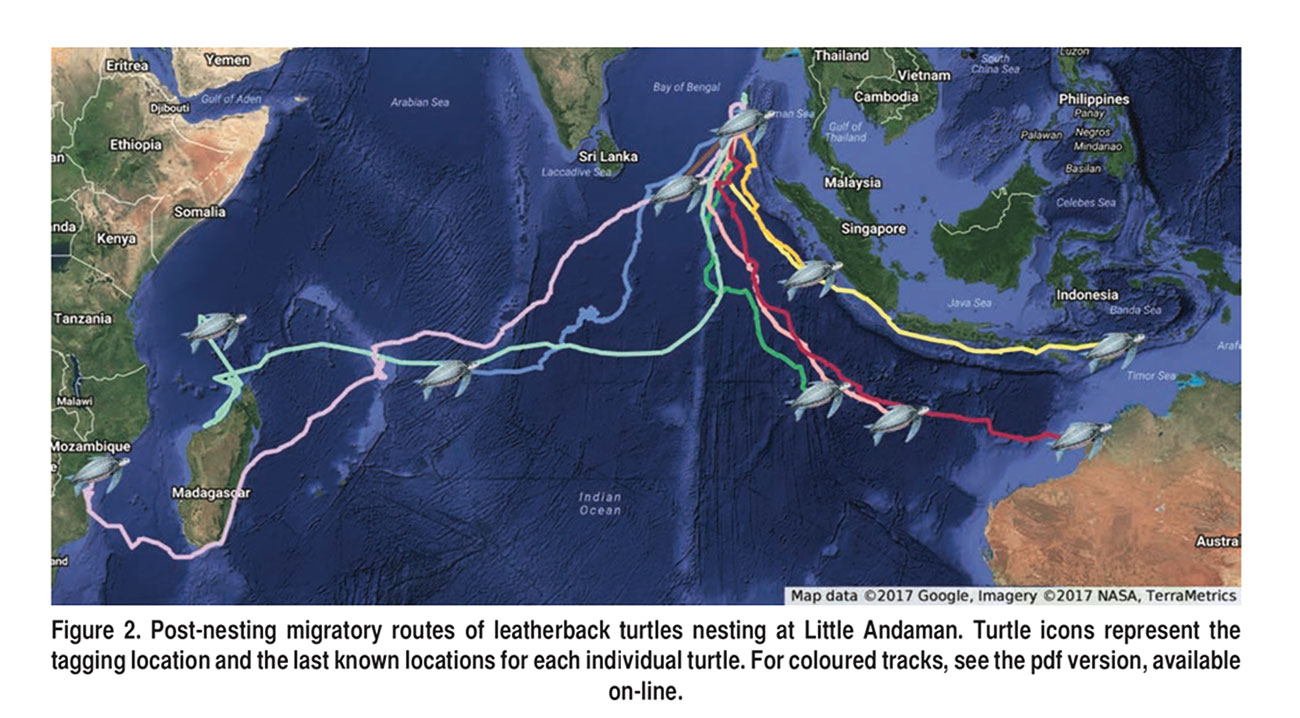
The map shows the post-nesting migratory routes of tagged leatherback turtles, representing their tagged location and last known location for individual turtles. Photo Courtesy: Dakshin Foundation.
Missing The Trees For The Forest
Let’s, for instance, unpack this ‘nesting holes of endemic owls’ condition. In a recent submission to the National Green Tribunal, the MoEFCC admitted that the land earmarked for the project on Great Nicobar has over 1.86 million (18.65 lakh) trees, and about a million are slated to be cut. An area larger than the size of Mumbai’s Sanjay Gandhi National Park will be deforested in a few years even as a climate crisis lurks around the corner.
Consider this as well: nesting holes of owls are tough to locate in the best of situations. We are talking here of 130 sq. km. of pristine tropical forest with few – if any – regular visitors. Even if scores of India’s finest birdwatchers were to work year-round to document all actual and potential owl nesting sites, it would be hopelessly unrealistic to survey one million ancient trees (some as tall as 45 m.) to identify the owls’ nesting holes. Clearly a survey such as this will achieve nothing, if it ever takes place. Let’s also ask the question whether Great Nicobar has any endemic owls at all, and the meaninglessness of the condition will become even more apparent.
Doublespeak runs through the environmental clearance granted. Take the condition that appears just above the one on endemic owls:
“No trees will be cut at one go. (...) All trees which are exceptionally tall and old in age shall be safeguarded, as far as possible. A&NFD will mark all such trees and submit the species-wise list to the Ministry and EAC and the regional office of MoEFCC before infrastructure activities take place”. (emphasis added).
For decades now, many experts have known that conditions imposed were meant to be followed in the breach.
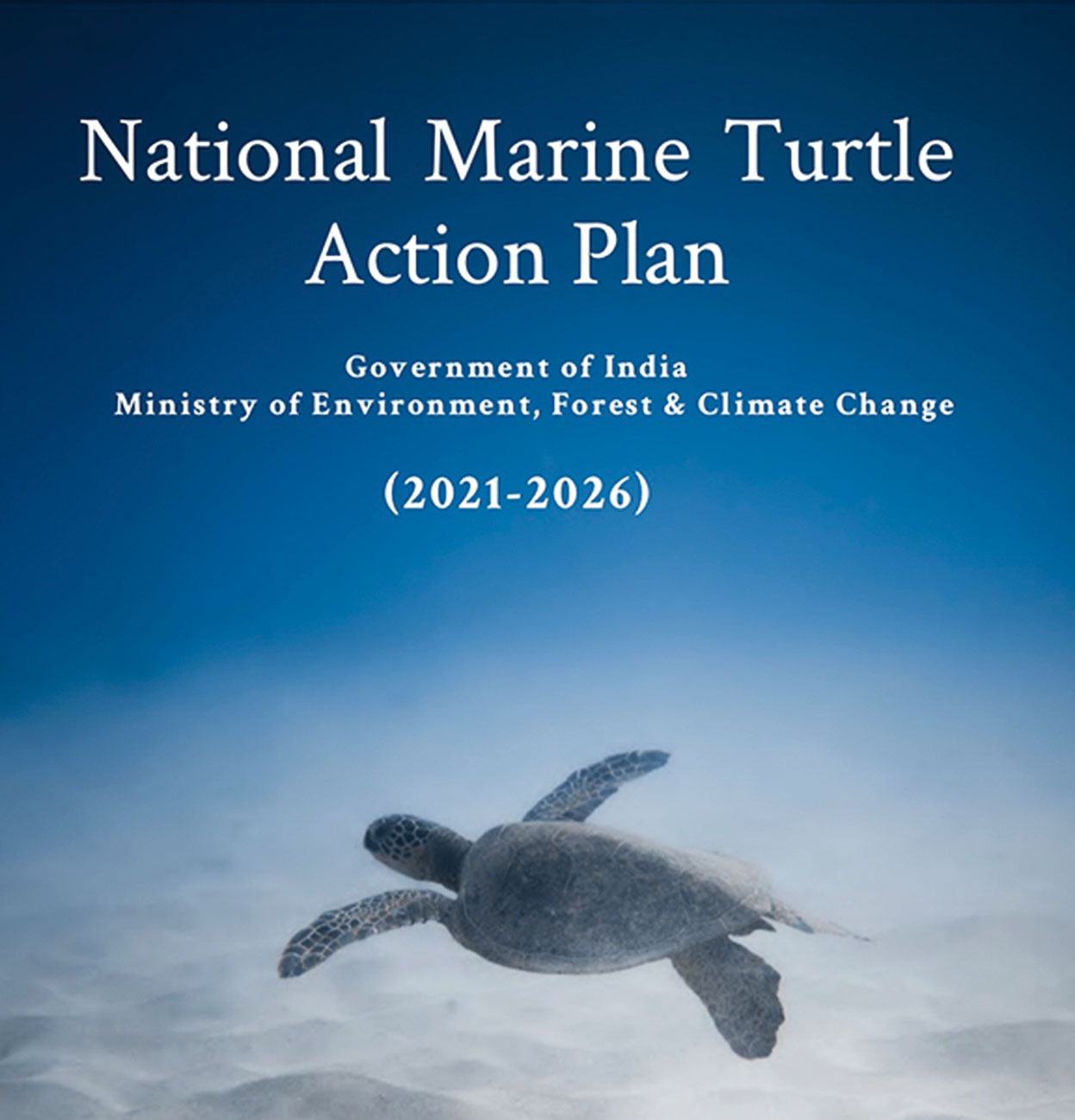
What Environment Impact Assessment Is This?
Hyderabad-based Vimta Labs released a draft EIA report of the project in December 2021 and a final version three months later, in March 2022. This report was the basis on which MoEFCC’s key body, the Environment Appraisal Committee – Infra I, recommended final environmental clearance in August 2022, which was eventually then granted in November 2022. Below is an extract from the EIA consultant’s Great Nicobar EIA study site visit report:
“The hills are steep, slippery and totally covered by multi-storeyed vegetation. Whenever we could gain entry through some opening into the dense/thick forest, visibility was poor; humidity was high; soil was wet and slippery on account of intermittent sharp showers every day, [and there were] invisible streams of water under a thick carpet of dead leaves and twigs. Added to the problem was biting insects including mosquitoes. Further, when one tries to look upwards to find out what tree it is, it is not just one but many. Most trees are overgrown by heavy climbers and the tree-trunks are covered by epiphytes including mosses, lichens, epiphytic ferns and orchids. There was no threat of venomous snakes as they do not occur in the Island. It was impossible to use any measuring devices like tape to make any quadrat in the forest vegetation. Hence, intensive survey was carried out on both sides of the Campbell-Indira Point for four days. It is about 45 km. and the entire stretch was survey (sic) eight times in four days.”
The sheer scale of this project and its possible impacts are staggering not just because of the ecological issues, but also the financial gamble involved. This is a Rs. 72,000 crore investment whose costs, going by past experience, are likely to be much higher before completion. We are talking about a tropical evergreen forest spread over 130 sq. km., a million old-growth trees, the northern Indian Ocean’s most important leatherback nesting site and a geologically volatile area that experienced one of the most severe earthquakes and tsunamis in human history in December 2004. Where is the scientific rigour and expertise?
The draft EIA report had suggested erection of barbed wire fences to separate the Indigenous peoples of the forests from the thousands of outsiders who will be brought in as part of this holistic development. The suggestion was fortunately removed following objections by researchers and NGOs, but none of this was a red flag for the MoEFCC, which stated in its February 2023 submission to the NGT that “environmental clearance... has been accorded... after an extremely detailed and rigorous scrutiny process at the highest level, and with scrupulous adherence to the [relevant] provisions...”.
And this is how we, in an era of an advanced climate crisis, signed away an ancient forest, a million trees, a bewildering array of biological diversity, and an irreplaceable repository of the planet’s ecological history.
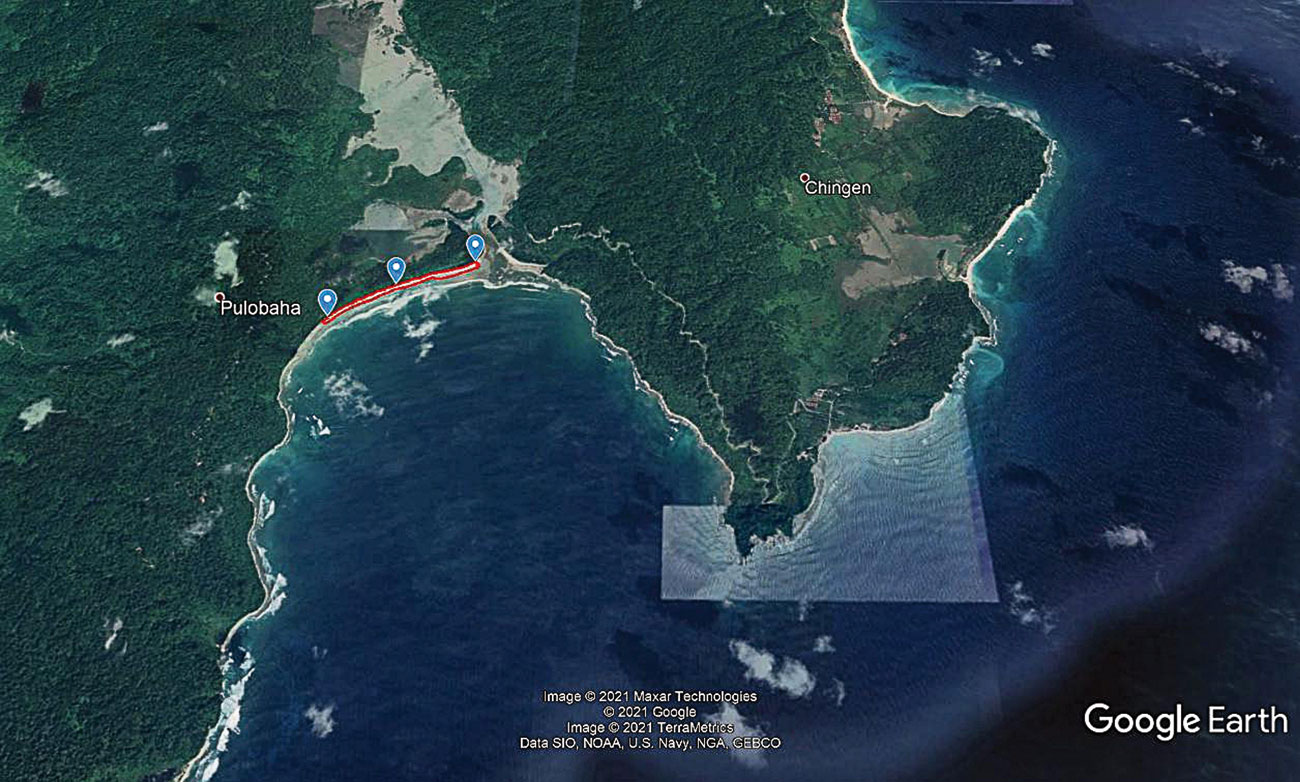
Photo Courtesy: 2021 AECOM India Private Limited.
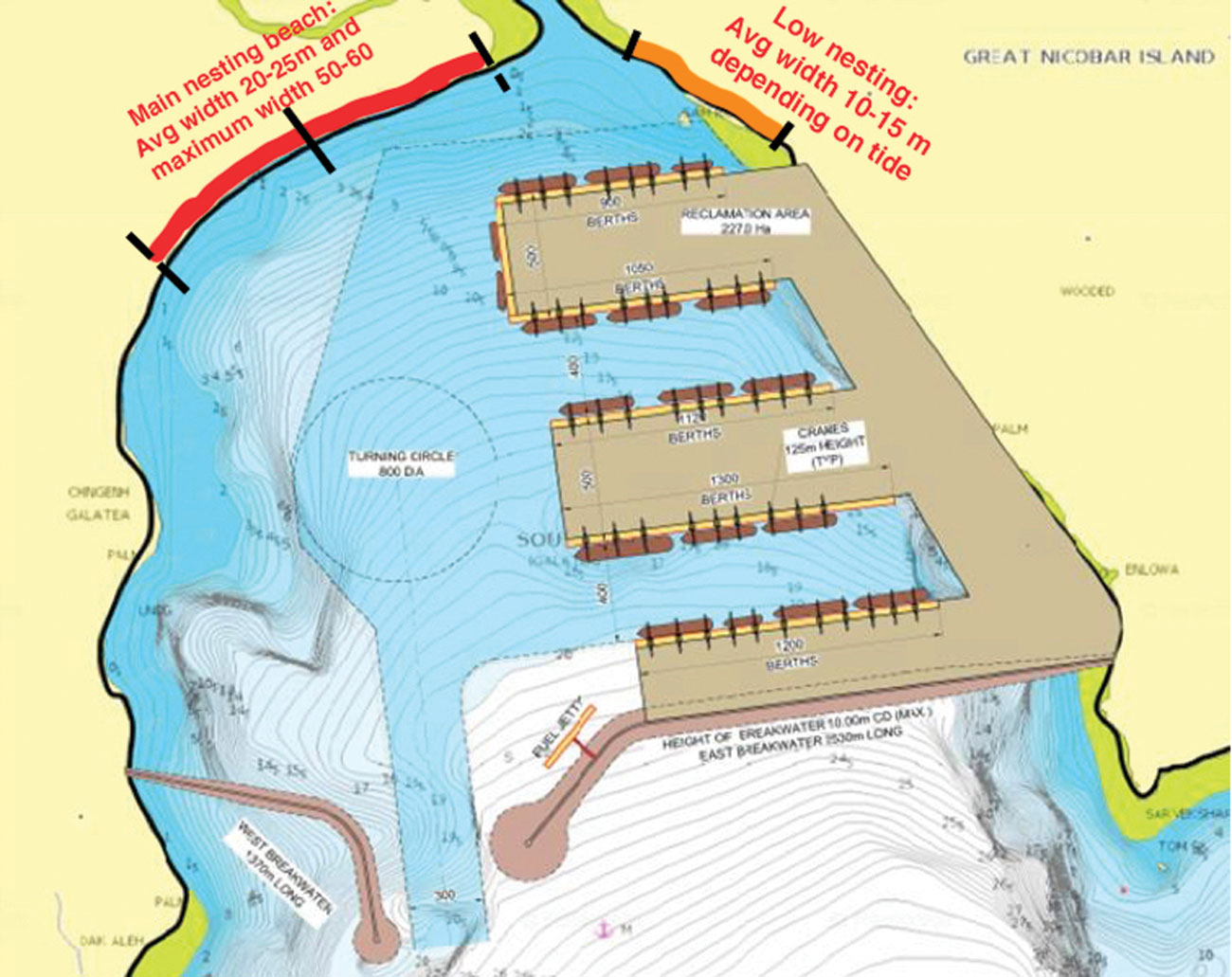
The proposed port plan for Galathea Bay from the Pre-feasibility Report of the Holistic Development of Great Nicobar prepared by AECOM in 2021 shows that close to 90 per cent of the bay mouth will be blocked by the construction of breakwaters for the port, leaving the turtles with an opening of only 300 m. to reach their nesting beaches. Map annotated by researchers from the Dakshin Foundation. Photo Courtesy: 2021 AECOM India Private Limited.
Galathea Bay And Its Giant Leatherbacks
On the south-eastern coast of Great Nicobar, not far from Indira Point – India’s southern-most tip – lies the beautiful Galathea Bay. It is here that Great Nicobar’s biggest river, the Galathea, empties into the ocean and sets the stage for a spectacle of nature not seen elsewhere in this country. On either side of the Galathea, as it enters the Bay of Bengal, are long stretches of soft, silvery sand, where ancient giants come to nest every winter.
Nearly 500 nests of the ocean’s largest turtles, the giant leatherback, have been counted here over multiple nesting seasons, including the two most recent. Galathea Bay is one of the most important leatherback nesting sites in the northern Indian Ocean, a living, breathing jewel in India’s crown, unlike any other. The leatherbacks of Galathea also make connections that we humans are barely aware or even capable of. Some of them swim to Australian waters after nesting here; others go the same distance and more but in the opposite direction to the African coast, and then they come back... in journeys and rituals that are ancient and have been undertaken for millions of years before Homo sapiens appeared.
So, do we care about the leatherbacks and this jewel called Galathea Bay? In 1997, we seemed to when 11.44 sq. km., including the nesting beaches and the waters of the bay, was proposed as the Galathea Bay Wildlife Sanctuary, “for protection and propagation of the giant leatherback sea turtle”. As recently as February 2021, the MoEFCC released India’s National Marine Turtle Action Plan that listed Galathea Bay as among the most “Important Marine Turtle Habitats in India”. The plan document has a preface message dated January 19, 2021 by the then environment minister Prakash Javadekar, that ended with the following statement: “I am confident that this ‘National Marine Turtle Action Plan’ will provide a fresh impetus to work towards conserving these magnificent species and their habitats and provide them with safe havens for their future and for a healthy planet.”
Ironically, many months earlier it had already been decided that a port was to be constructed in Galathea Bay. Exactly two weeks before the minister signed the action plan, the National Board for Wildlife (NBWL) had, under his watch, denotified the sanctuary to facilitate the port construction. The denotification was also ratified by the Wildlife Institute of India, which recommended the development of a mitigation plan “so that marine turtles continue to nest on the beaches near Galathea Bay during both construction as well as operational phases of the International Shipment Project”.
And this when the WII, by its own admission, has no experience of ever having worked on sea turtles anywhere in the Andaman and Nicobar Islands. Six months after ratifying the denotification and suggesting the idea of a mitigation plan, the WII was asked under a right to information (RTI) query for a list of its scientific studies and collaboration on leatherback turtles in the Andaman and Nicobar Islands. The WII had a short and simple answer – it had none! WII had not conducted a single study of leatherbacks in the islands and yet it signed away Galathea Bay for a port project they knew nothing about. The work of the MoEFCC and its expert committees had thus been simplified.
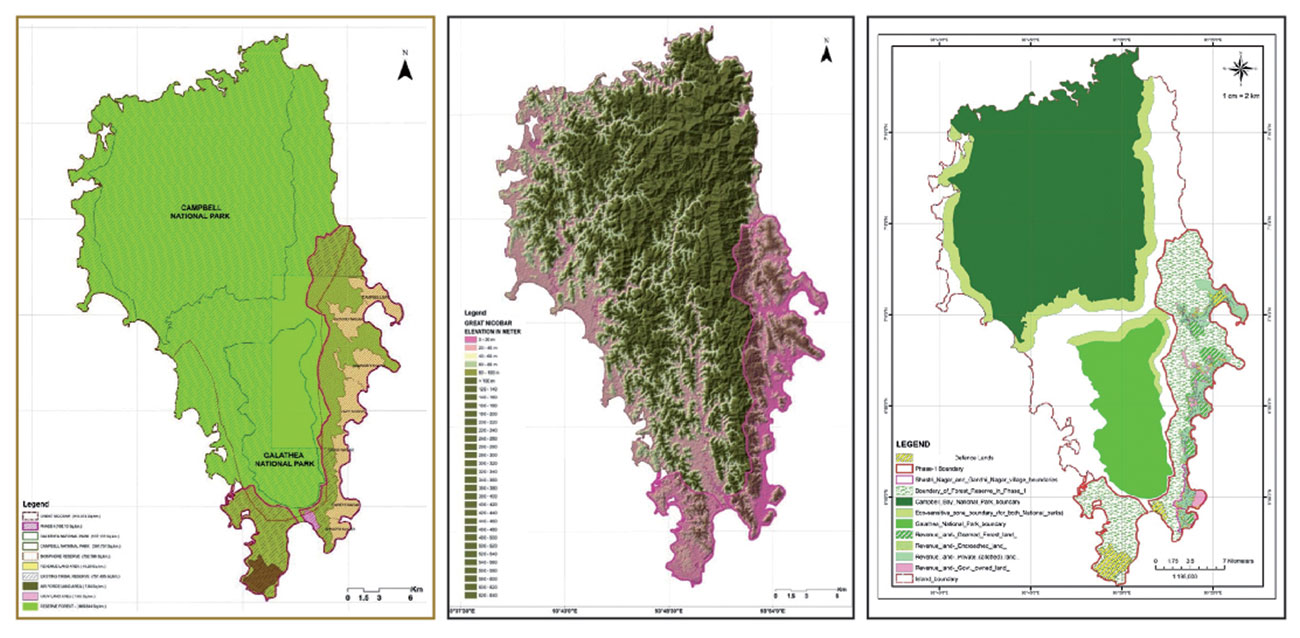
Fig. 1 shows land use of the proposed project area, fig. 2 is a representation of the project area overlaid on a topographic map, while fig. 3 shows the locations of national parks, reserve forests and revenue land of Great Nicobar Island. Source: Holistic Development of Great Nicobar, Pre-feasibility Report (AECOM, 2021). Photo Courtesy: 2021 AECOM India Private Limited.
But What Will You Mitigate?
The absurdity of the NBWL and WII’s position becomes doubly evident when one realises that they both approved the denotification even before the government would float a formal proposal for the project. The Sanctuary was denotified in January 2021, but the official ‘prefeasibility report’ for the project was released by the NITI Aayog-appointed consultant AECOM India Pvt. Ltd. in March 2021.
There is more. Just a cursory glance at the layout and the design of the port in the prefeasibility report (see accompanying image ) illustrates the impossibility of effective mitigation. The leatherbacks nesting on the beaches of Galathea enter the bay today through a mouth that is more than three kilometres wide. As much as 90 per cent of this access will be blocked by the construction of breakwaters, leaving the turtles a mere 300 m. to reach their nesting beaches. This too in competition with huge ships, their sound and light, and the inevitable spills and pollution. The WII pliantly offered the planners the figleaf of ‘mitigation’ for mission impossible.
Back to the Environment Clearance conditions where the turtle is referred to 50 times in the entire document. The mouth of the bay will be pretty much cordoned off for the turtles, but this again is of no concern to the MoEFCC and
its committees.
Here is an illustrative list of conditions and solutions laid down to ensure the future of the threatened turtles and to address the concerns expressed by those genuinely worried.
* Creation of a leatherback turtle sanctuary of 13.75 sq. km. at Little Nicobar
* Identification of WII as the scientific agency to prepare and implement conservation plans for leatherback turtles
* Placement of a “series of Ecological Marker Buoys for every 200 m. along the proposed extended breakwater line. Also, Marker Booms may be connected between the buoys. Such arrangement will clearly mark the ‘Area to be avoided to aid turtles’, warn restriction of the navigational route, thereby neither ships nor boats can enter the ‘Turtle nesting area’. It would protect the turtles from the port operation (emphasis in original).
* Installation of deflectors to clear turtles from the path of the suctioning equipment. Underwater silt/sediment dispersal preventing curtains to be deployed to avoid deposition of silt on sandy shores. And mitigation has been done!
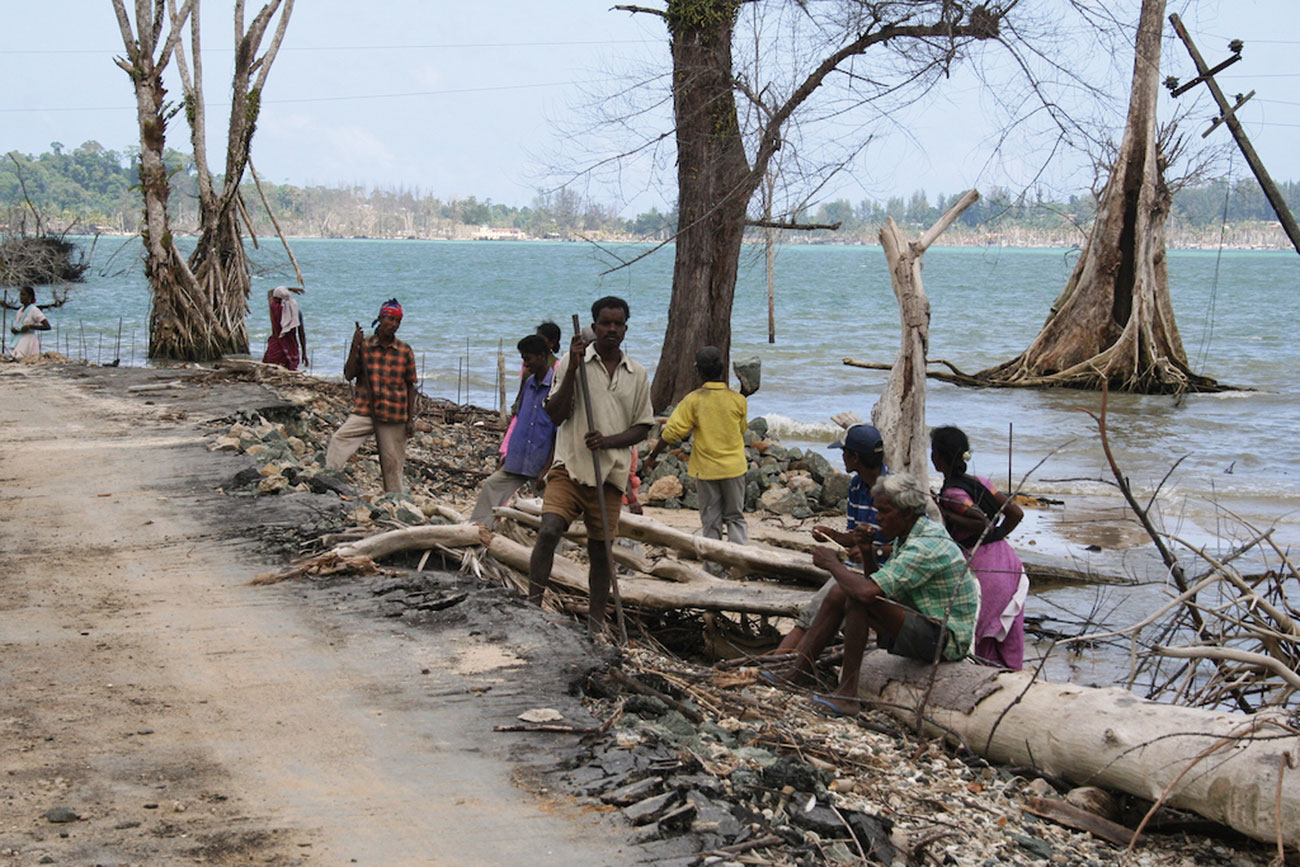
Given the fact that rising seas are likely to force several island nations to either relocate, or re-evaluate the past economic risk analysis results, investing Rs. 41,000 crore on a port project on precisely this coastline seems reckless and dangerous. Photo: Pankaj Sekhsaria.
There Is More
Weeks before the environmental clearance was granted, the same ministry granted Stage 1 forest clearance to the project. The ministry’s Forest Advisory Committee (FAC) agreed to divert 130 sq. km. of primary forest on the condition that these forests would be compensated by tree plantation in the state of Haryana, more than 2,000 km. away.
Expectedly, the proposal has been criticised by both legal researchers and ecologists, the former for its legal impropriety, the latter for its ecological damage and the notion that millions of years of botanical and zoological evolution in Great Nicobar could be compensated by tree planting in the Aravallis, in far away Haryana.
Both the scale of tropical forest destruction and the process followed are deeply problematic. The Forest (Conservation) Act, 1980 mandates that proposals for forest diversion must be examined by the Forest Advisory Committee (FAC) and the outcome must be in the public domain. At the time of writing this piece (March 23, 2023), records on the MoEFCC website reveal that 26 meetings of the FAC were held in the two-year period between October 2020 – when forest clearance was sought for the Great Nicobar Project – and October 2022, when Stage 1 clearance was granted. Neither the agenda nor the minutes of these 26 meetings make a mention of the Great Nicobar Project. We must therefore infer that the FAC never discussed the project and yet, the clearance letter of October 27 mentions that “the proposal has been examined by the Forest Advisory Committee” and also makes it explicit that the clearance is based on its “recommendations”. Emails sent in October and November 2022 and again in January 2023 to officers in the MoEFCC, in the Haryana Forest Department, and to members of the FAC requesting clarifications received no responses, clarifications or details.
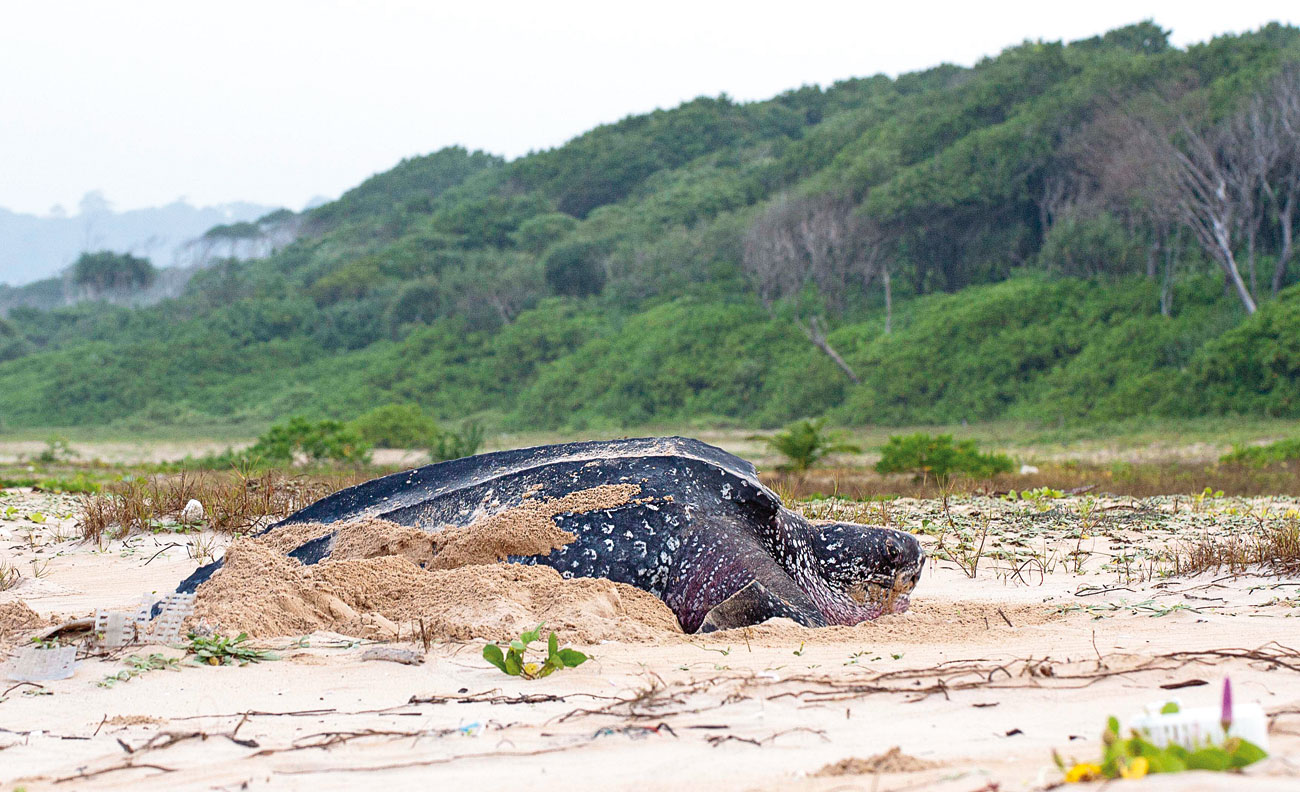
The Wildlife Institute of India ratified the denotification of Galathea Bay Wildlife Sanctuary inspite of not having done a single study on the nesting habits of leatherback turtles. Photo: Adhith Swaminathan.
What About The Tribal Communities?
It is the same for concerns related to the rights and the livelihoods of the two tribal communities for whom Great Nicobar has been home for eons – the Nicobarese and the Shompen. The latter is classified a particularly vulnerable tribal group (PVTG) and is a hunter-gatherer nomadic community, critically dependant on the forests of this island for survival.
The role of the institutions mandated here with the task of tribal welfare too is marked by apathy and a complete lack of concern. An example is the August 2021 letter by the A&N Administration’s Directorate of Tribal Welfare. It begins by assuring that the island administration will protect the rights of the tribals and goes on immediately to say that the Directorate will seek required exemptions(s) from the competent authority “whenever any exemptions” are needed “for the execution of the project”.
At the national level too, the Ministry of Tribal Affairs (MoTA) and the NITI Aayog seem to have completely abdicated their responsibility in the matter. Responding to an RTI application in early November 2022 that sought details on tribal issues in Great Nicobar, the MoTA’s PVTG division said it had no information in the matter and kicked the ball towards the NITI Aayog and the Ministry of Home Affairs. On November 11, just four days later, the NITI Aayog promptly kicked the query back to MoTA for further necessary action. The Tribal Ministry’s PVTG division responded on November 18, reiterating that it has no information in the matter and again kicked the ball upstairs to the Ministry of Home Affairs “for providing information to the applicant directly”.
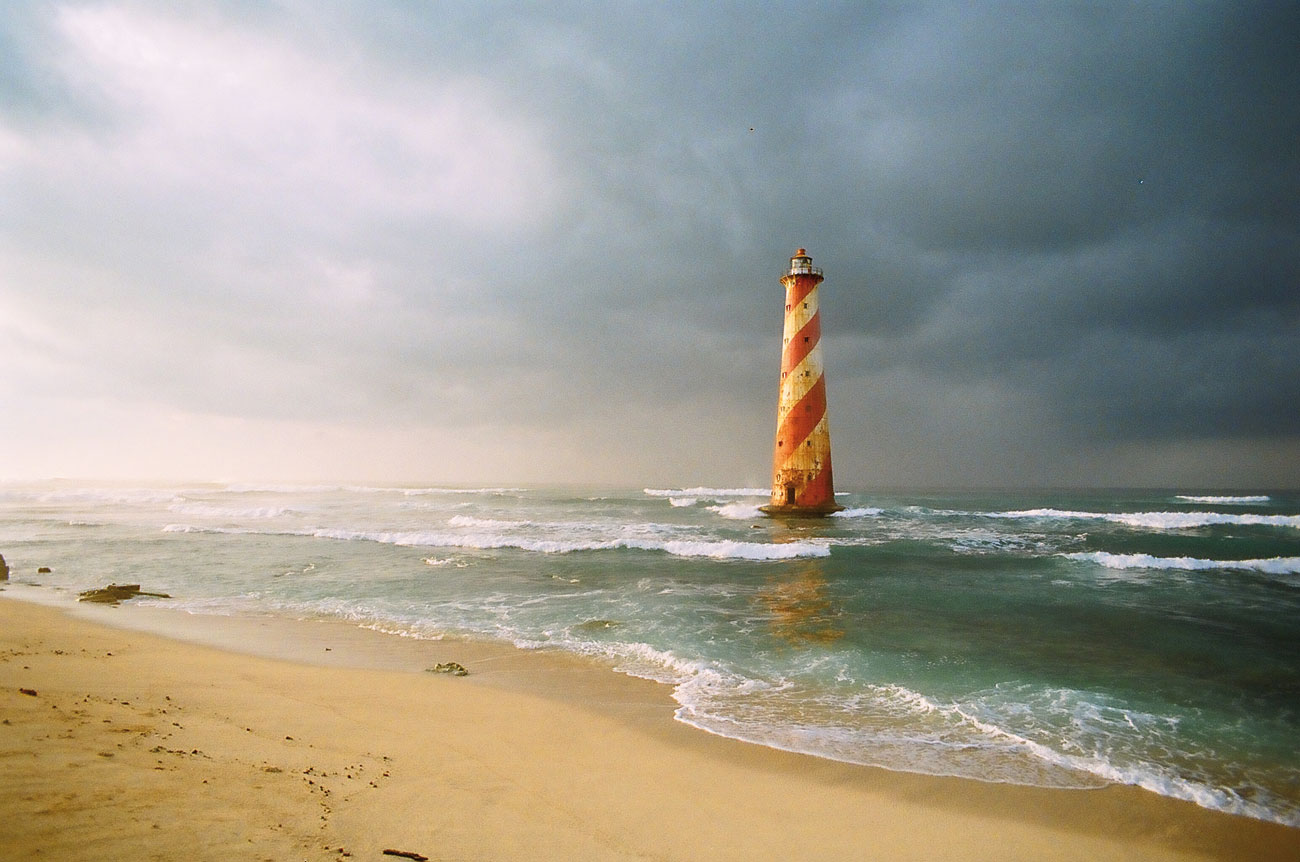
The scale of the subsidence in Great Nicobar post-tsunami in 2004 is evident from the fact that the lighthouse at Indira Point, which was earlier situated well above the high tide line now stands completely surrounded by the waters of the Andaman Sea. Photo: Dr. Manish Chandi.
Disaster Vulnerability
Worryingly, the project site is located along a major tectonic fault. Janki Andharia and her colleagues at the Tata Institute of Social Sciences (TISS) have repeatedly warned that the risk this poses has not been accounted for. They had pointed in their comments to the draft EIA report that the islands have experienced nearly 444 earthquakes in the last 10 years and the plan for the container terminal here “needs to be reconsidered”.
Andharia has first-hand experience of dealing with the impacts of a disaster in these islands. She was the leader of an intensive four year on-ground TISS effort, in partnership with the island administration, to reach out to the island chain’s worst hit communities in the immediate aftermath of the 2004 tsunami. “Stating ‘that building standards and codes will be followed’ is inadequate,” she says, commenting on the project authorities’ response to her observations on the draft EIA report. “The meaning of ‘making a structure earthquake proof’ needs to be revisited in this context,” she explains. “This cannot be the same as waterproofing a house because a post facto disaster response plan will not prevent a disaster from happening in the first place.”
It is worth remembering that the light house at Indira Point stands in water today because the earthquake of December 2004 caused Great Nicobar’s coastline to subside by nearly 4.5 m. Also, that Great Nicobar has experienced one earthquake on average every week over the last decade. Given the fact that rising seas are likely to force several island nations to either relocate, or re-evaluate past economic risk analysis results, investing an anticipated Rs. 41,000 crore on a port project on precisely this coastline seems reckless and dangerous. How, one wonders, would one calculate the permanent risk of yet another devastating earthquake and tsunami hitting the Great Nicobar coast?
Timeline
Mid-2020 The Andaman and Nicobar Islands Integrated Development Corporation (ANIIDCO) is designated the nodal agency for the implementation of the Holistic Development plan for Great Nicobar Island.
September 2020 NITI Aayog issues a 201-page request for proposal (RfP) for ‘Preparation of Master Plan for Holistic Development of Great Nicobar Island’.
October 2020 A&N Forest Department sends the proposal for the diversion of 121.87 sq. km. of forest land and 8.88 sq. km. of deemed forest for sustainable development in Great Nicobar (Phase-I) to MoEFCC.
December 2020 AECOM India Pvt. Ltd. (consultant engaged by NITI Aayog) approaches Zoological Survey of India (ZSI) to prepare EIA report on marine ecology.
December 2020-March 2021 VIMTA Lab Ltd. appointed by AECOM collects baseline data for EIA report.
January 2020 Galathea Bay Wildlife Sanctuary and Megapode Wildlife Sanctuary are de-notified.
February 2021 ZSI begins survey to assess biodiversity of Great Nicobar Island.
March 2021 Publication by AECOM of a 126-page pre-feasibility report titled ‘Holistic Development of Great Nicobar Island at Andaman and Nicobar Islands’.
April 5-6, 2021 260th meeting of the EAC Infra-I: The EAC recommended the Great Nicobar proposal for grant of Terms of Reference (ToR) for preparation of EIA/EMP report.
April 14-19, 2021 WII conducts a survey to understand current status of beaches with respect to sea turtles in Great Nicobar Island.
June 2021 Leading turtle researchers and research organisations send a letter of concern to concerned authorities on impact of development projects in Little Andaman and Great Nicobar Islands.
December 2021 Publication of draft EIA report.
January 1, 2022 Public hearing held at Campbell Bay.
March 6, 2022 ANIIDCO submits the final EIA study and application for environmental and CRZ clearance to EAC Infra-I.
March 24-25, 2022 293rd meeting of the EAC Infra-I: EAC deferred the proposal citing the submission of the documents just two days prior to the meeting.
August 22-23, 2022 306th meeting of EAC Infra-I: EAC recommends the project for approval.
October 27, 2022 Stage I in-principal Forest Clearance granted.
November 11, 2022 Environmental clearance issued to the project proponent.
January 27, 2023 Ministry of Ports, Shipping and Waterways invites expression of interest (EoI) for construction of port in Galathea Bay.
March 7, 2023 Ten firms submit EoI to construct the port in Galathea Bay.
Critical Juncture
Concerns over the project, discussions in the media and questions in Parliament have thrust the Great Nicobar Island into the national limelight as never before. The last time it made the headlines was when the earthquake and tsunami of December 2004 struck.
Less than two decades later, we appear to have forgotten lessons from the past. This pristine island, its invaluable biodiversity, its original human inhabitants, plus thousands of crores of scarce money are being placed in harm’s way. And the same goes for the possible 3,00,000 outsiders the project will bring to Great Nicobar Island.
This is surely a great misadventure and history will record that it was undertaken knowing fully well the lethal risks that lay ahead for the island, the people of India and the world.










